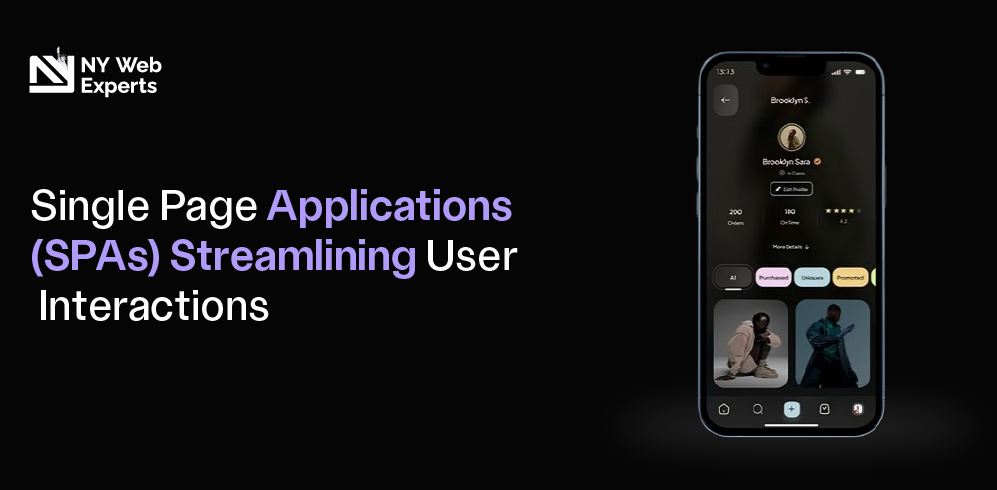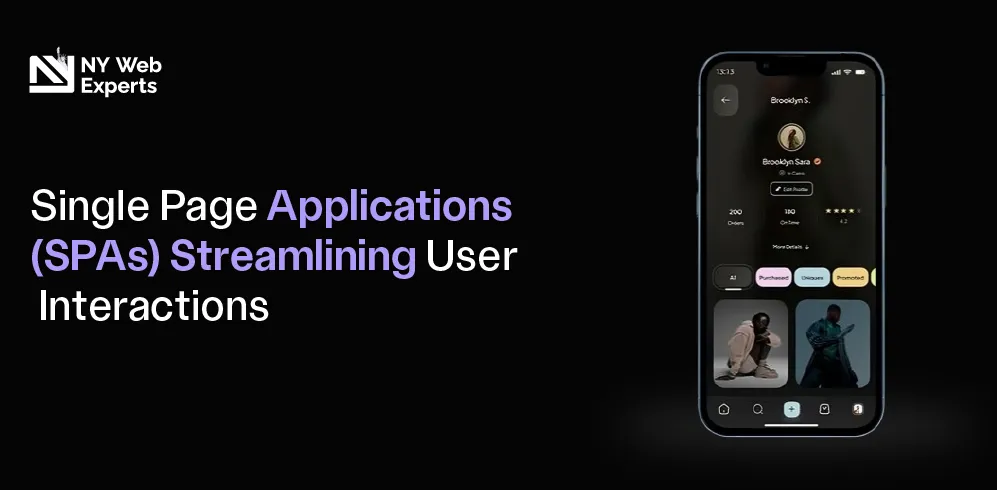
The way modern users interact with websites is changing fast, and Single Page Applications (SPAs) is streamlining user interactions. As someone who has worked closely with modern web technologies, I’ve seen firsthand how SPAs simplify the browsing experience by offering dynamic content without constant page reloads.
Single Page Applications (SPAs) are built using powerful JavaScript frameworks like React and Angular, delivering a smooth user experience and lightning-fast responsiveness, which modern users expect.
I have helped companies shift their websites to SPAs, and the results are enormous: fast-loading pages and increased user interactions are just the tip of the iceberg. In this blog, I’ll dive deep into what SPAS are, their benefits, common challenges like client-side rendering and SEO, and why they’re shaping the future of the digital world.
What Are Single Page Applications (SPAs)?
Single Page Applications (SPAs) are streamlining user interactions through a wave of faster, more dynamic websites. A Single-Page Application (SPA) is a web app that operates within a single main HTML page, dynamically updating the content without a page refresh.
This occurs through client-side rendering, resulting in a significantly smoother user experience. Built using powerful JavaScript frameworks like React and Angular, SPAs load only the necessary data as you interact with the page, delivering dynamic content instantly. Instead of the traditional click-load-wait cycle, users enjoy seamless transitions, much like those found in mobile apps.
To understand it better, let me give you examples of websites we have all used that have integrated single-page applications to streamline user interactions: Platforms like Gmail, Netflix, and Facebook demonstrate the real-world power of Single-Page Applications. You click on a link, and without the need of page reload or refresh, you are shifted onto the next page.
For businesses aiming to offer speed, responsiveness, and modern engagement, adopting Single Page Applications (SPAs) for streamlining user interactions is a smart step into the future of web development.
Advantages of SPAs Over Traditional Websites
The main reason I recommend Single Page Applications (SPA) to clients is because of the increased user experience they offer. Traditional websites load pages every time a user navigates to a different section. In contrast, Single Page Applications rely on client-side rendering, making transitions almost instant and keeping users more engaged.
With SPA, clients can deliver dynamic content quickly, decreasing bounce rate and increasing user experience. Using JavaScript frameworks like React or Angular, developers create highly responsive, fast, and high-performance websites.
For companies focused towards speed, high responsiveness, and performance, shifting to Single Page Applications is the best option to streamline user experience as it provides a competitive edge in the fast digital world.
Popular Frameworks for Building SPAs
When it comes to creating powerful Single Page Applications (SPAs) for streamlining user interactions, choosing the right JavaScript framework is important, as it is the basis of the foundation and very much depends on your goals.
Some frameworks have become industry leaders because of the speed, flexibility, and community support they offer. Leading frameworks are:
-
React:
React is developed by Facebook and is one of the most popular choices for building SPAs. It focuses on creating fast, dynamic user interfaces through a component-based structure.
-
Angular:
Another major player is Angular, maintained by Google, which offers a comprehensive solution with built-in tools for handling dynamic content and client-side rendering efficiently.
-
Vue.js:
Vue.js is also a favourite among developers who want something lightweight yet powerful. It combines features from both React and Angular.
These JavaScript frameworks are designed to streamline user interactions through coding and scalability. Depending on your project needs, each of these frameworks can provide a solid foundation for building high-performance single-page applications.
If you’re looking to develop a single-page application for your brand, NY Web Experts are the pioneers in providing fast, interactive SPA-based solutions.
SEO Considerations for Single Page Applications (SPAs)
Single-Page Applications streamlines user interactions by offering lightning-fast responses; however, they do come up with some unique SEO challenges. SPA heavily relies on client-side rendering, which makes it challenging for search engines to index the page. This affects the visibility of the website if the problem is not handled during development.
One way to solve this is by implementing server-side rendering (SSR) or utilising pre-rendering tools to make content easily accessible to search engine bots. Another important step is ensuring clean URL structures and setting up proper metadata for each dynamic view.
Whether you’re building a website using React, Angular, or any other JavaScript framework, implementing the best SEO practices is important for website ranking. If you’re not careful, even the best-designed SPA can lose valuable visitors.
The good news? With careful planning and the right technical setup, Single Page Applications can rank better than traditional websites.
Performance Optimization in SPAs
Building Single Page Applications (SPAS) is just the beginning; keeping them fast and efficient is more important. Because SPAS rely on client-side rendering and handle large amounts of dynamic content, performance optimization becomes crucial.
Over time, I have found these key techniques do make a difference:
-
Code Splitting:
This means breaking your code into smaller bundles, so that any specific function loads only that which the user interacts with it.
-
Lazy Loading:
Load images, components, and other assets only when they are needed.
-
Caching with Service Workers:
Store assets offline for faster repeat visits.
-
Reducing JavaScript Payload:
Minimize and compress scripts to lower page load times. -
Optimizing Images:
Serve compressed, next-gen image formats to boost speed further.
It doesn’t matter what framework you’re using for development, as long as you apply these practices, you will ensure your website remains fast, dynamic, and light.
Case Studies: Businesses Benefiting from SPAs
Since its development, many companies have shifted to single-page applications to streamline user interactions and have benefited from it. Here are some top examples:
-
Gmail:
Gmail is the world’s largest email platform. It shifted to SPAs in 2004. Today, Gmail services 1.8 billion customers and much of its success is credited to instant load times and dynamic content.
-
Facebook:
Facebook handles over 2.9 billion active users monthly. SPA helped significantly reduce page load times and improve daily active user engagement.
-
Netflix:
Netflix achieved a 50% faster startup speed and reduced time-to-interactive across devices, resulting in higher viewer retention.
-
Twitter:
Twitter adopted a hybrid SPA approach in 2017, which reduced initial load times by 30% compared to their previous web setup, resulting in longer average session durations.
By implementing SPAs, these brands have significantly enhanced engagement, responsiveness and conversions.
Future Prospects of SPAs in Web Development
The future of Single Page Applications looks very promising. Users demand a faster, app-like experience, and to cater to that, businesses are increasingly turning towards JavaScript Frameworks like React and Angular to develop Single-Page Applications.
The rise of dynamic content, client-side rendering, and progressive web apps (PWAs) is further blurring the line between web and native mobile apps. However, SEO and performance challenges mean any development must be strategic, and should focus on scalability.
All-In-All:
Single Page Applications (SPAS) have revolutionized our web experience. By using powerful JavaScript frameworks like React and Angular, businesses are delivering faster, smoother, and more engaging platforms that meet modern expectations.
While SEO and performance require careful planning, the benefits of improved user experience and dynamic content make the effort worthwhile. As more companies adopt SPA architecture, staying informed and proactive will be key to staying competitive.
If you want to know more? Contact NY Web Experts and make the responsible decision for your business.
FAQs
-
How do SPAs differ from traditional multi-page websites?
Single Page Applications (SPAs) load one main page and update content dynamically, while traditional sites reload full pages on each click. -
What are the SEO challenges with SPAs?
SPAs rely on client-side rendering, which can make it harder for search engines to index content without proper server-side rendering or SEO strategies. -
Which frameworks are best for developing SPAs?
React, Angular, and Vue.js, all offering powerful tools for building fast, dynamic, and scalable SPAs.









